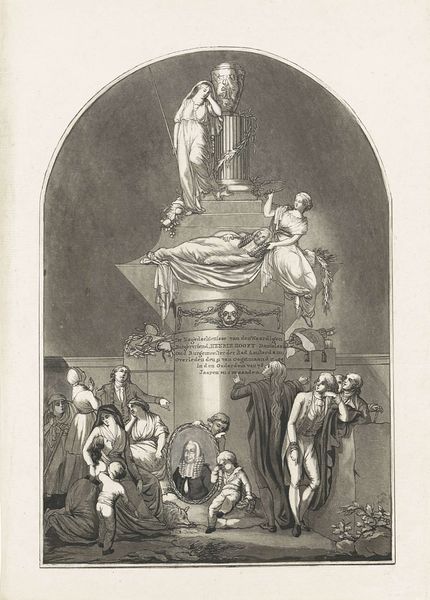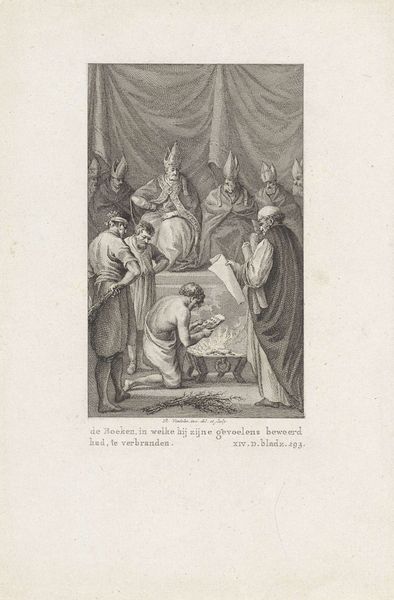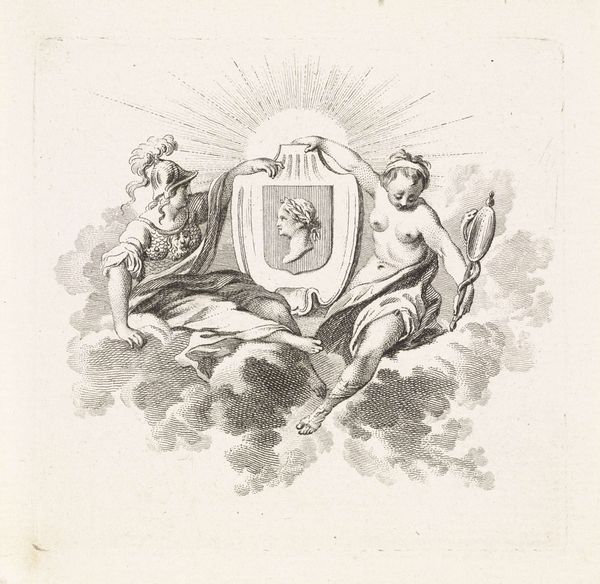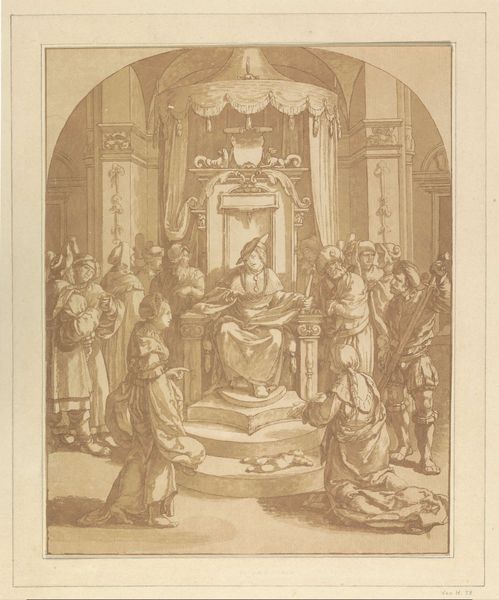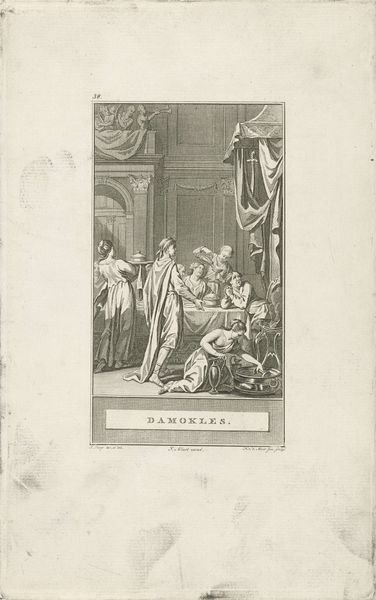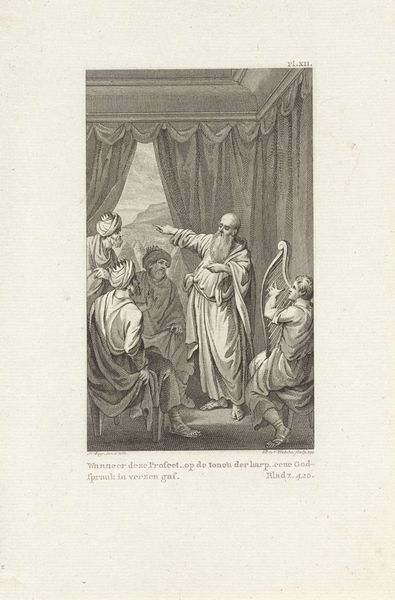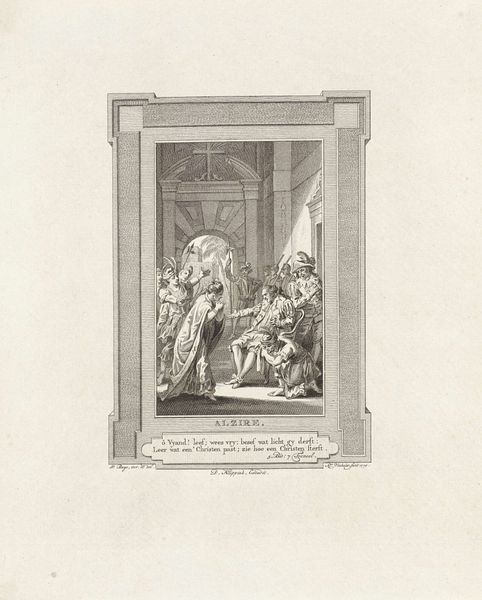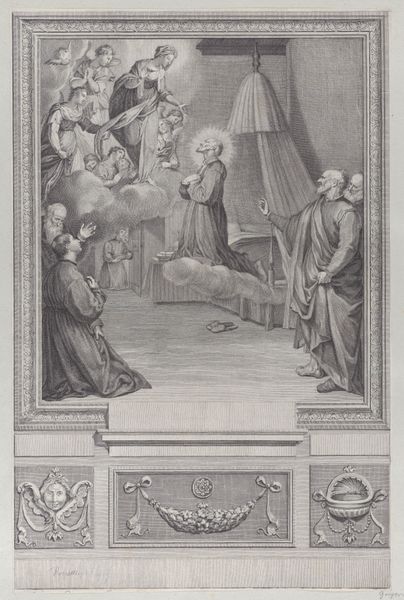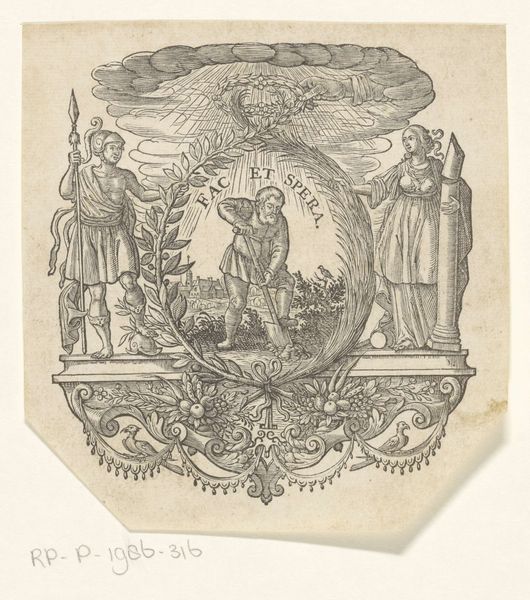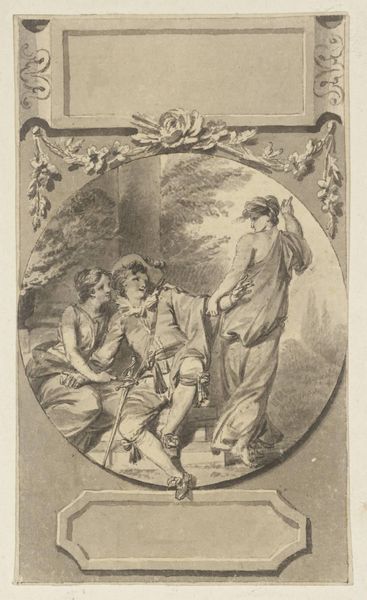
drawing, print, engraving
drawing
figuration
romanticism
history-painting
engraving
Dimensions: height 227 mm, width 149 mm
Copyright: Rijks Museum: Open Domain
This print from 1821 by Philippus Velijn, now in the Rijksmuseum, depicts Penelope at her loom. It shows a scene from Homer’s Odyssey, in which Penelope, wife of Odysseus, weaves a burial shroud for her father-in-law. For three years she delays her many suitors by promising to choose one when the shroud is finished, but each night she unravels what she has woven. The image speaks to the ideal of female virtue: patience, constancy, and cleverness. Consider the visual codes: the classical dress, the allegorical figure above, and the suitors clamoring for her attention. This work reflects the cultural norms of the Netherlands in the early 19th century, where classical themes were often used to convey moral lessons. The print would have been circulated among the educated middle class, reinforcing the importance of family values and social order. To fully understand this image, we can consult historical texts, literature, and studies of Dutch social history. Art, after all, is always embedded in a specific time and place.
Comments
No comments
Be the first to comment and join the conversation on the ultimate creative platform.

